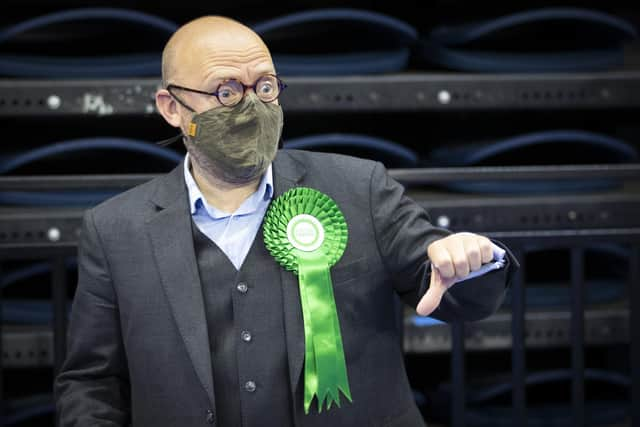Scottish Election 2021 results: Early signs encouraging for Scottish Greens with all to play for in regional lists
A full breakdown of how the electorate allocated their list votes is not expected until Saturday evening, but crunching the early numbers from Friday’s count gives weight to claims the party is a growing force in Scottish politics.
The party fielded a record 12 constituency candidates, a fourfold increase on 2016. As of 7:30pm Friday, six of those constituencies had declared.
Advertisement
Hide AdAdvertisement
Hide AdThe Greens did not win any, with an average vote share of 5.25 per cent. Hardly a resounding victory, you might think, especially with Alison Johnstone’s share in Edinburgh Central falling 4.6 points on 2016.
But the constituency vote has never been where the Greens secure their MSPs. Granted, Patrick Harvie, the co-leader, has more reason than most to be optimistic about his prospects in Glasgow Kelvin, but it is the regional list vote where the party secures its parliamentary representation.
In that respect, the early figures for list candidates in individual constituencies look encouraging for the Greens, who hope to the surpass the high watermark of the seven MSPS it secured back in 2003.
The latest results show that In Dundee West, it took 8.9 per cent of the list vote, up 2.8 points on 2016. Its 8.6 per cent share in Clydebank and Milngavie is up 1.8 points. And in Aberdeen Donside, its 4.9 per cent represents a 1.5 point increase.


We will know on Saturday if those figures are indicative of a trend, but there is confidence about the list vote in Glasgow and the Lothians, and the SNP’s constituency gains, could further bolster the Greens’ prospects in regional lists.
Such improving fortunes would no doubt owe something to an increased awareness of tactical voting on the part of pro-independence voters, but they could also be seen as a reward for the inroads it has made in recent years.
Senior figures in the party viewed 2021 as a springboard to establish itself as a prominent national force. The party has been buoyed by a long overdue reform and it has accrued significant political capital via its qualified support of the previous SNP government.
In backing this year’s budget, for instance, it secured extra money for public sector workers, public transport and free school meals. Such victories delivered on its key manifesto pledges, and no doubt brought traditional Scottish Labour supporters on board.
Advertisement
Hide AdAdvertisement
Hide AdBut coupled with the party’s consistent criticism of the SNP’s track record on climate targets, they also underlined questions about the progressive credentials of the SNP’s broad church.
The looming question is whether the SNP will look to the Scottish Greens as it forms a government in the next parliamentary term.
The Greens are undoubtedly open to the idea, but the numbers game will determine whether each party views some form of power sharing as necessary or beneficial. For now, it is too early to tell.
A message from the editor:
Thank you for reading this article. We're more reliant on your support than ever as the shift in consumer habits brought about by coronavirus impacts our advertisers. If you haven't already, please consider supporting our trusted, fact-checked journalism by taking out a digital subscription.
Comments
Want to join the conversation? Please or to comment on this article.
